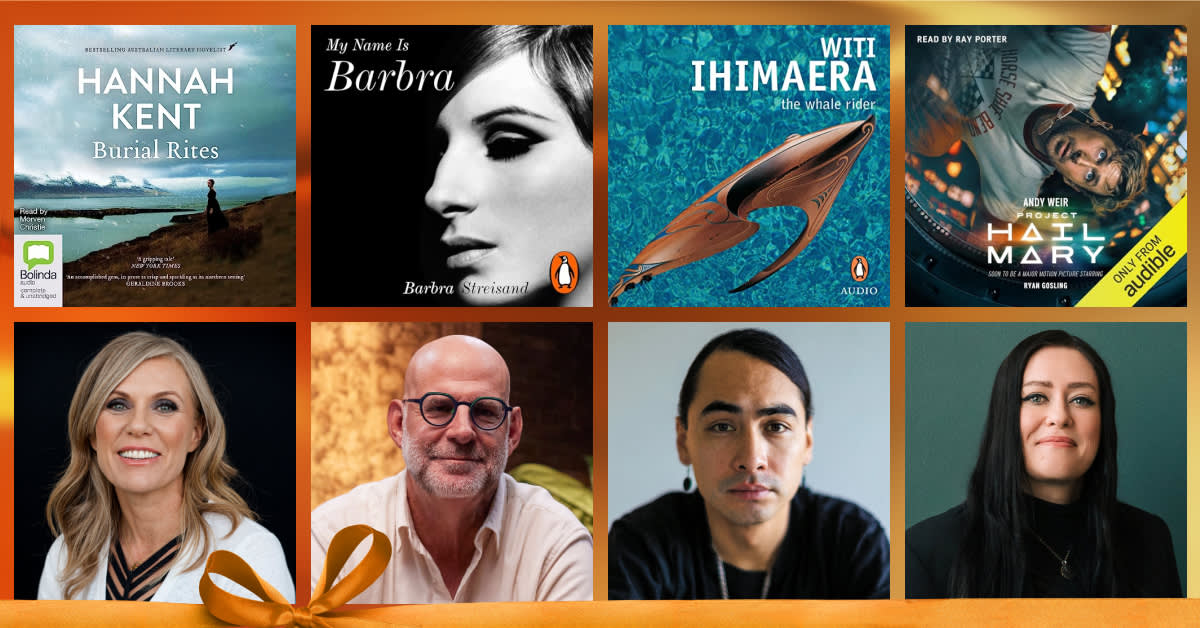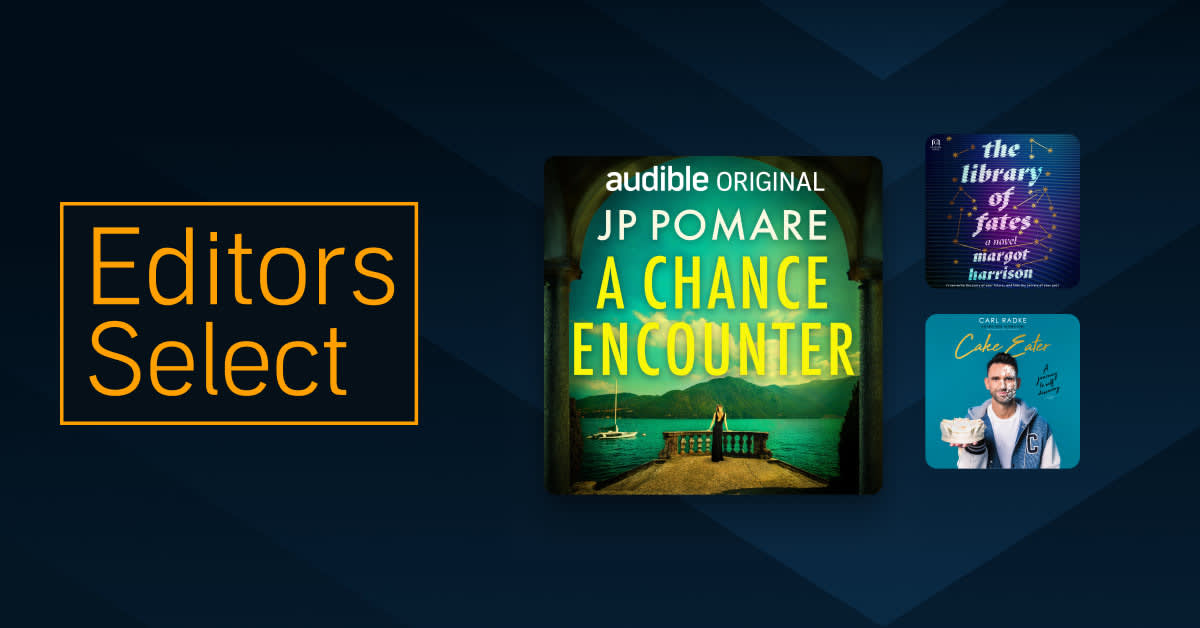This post was originally published on Audible.com.
National Novel Writing Month—or NaNoWriMo, as the pros call it—is the one time every year you can be totally obsessed with your novel, live knee-deep inside your own stories, and no one can say anything about it! It is, in short, a creative writer's dream (or nightmare, depending on how well you write under pressure).
Here's the gist: this creative writing project challenges novelists from newbies to seasoned professionals to write a 50,000-word novel between November 1 and November 30. If that sounds crazy to you, you’re not alone. I’ve personally been working on a novel in earnest for the past two years, and it’s been living in my mind for a lot longer than that. But hey—that's the whole point. Stories live inside all of us, and they matter. From fantastical epics to realistic shorts to flash-fiction, we each have our own wonderful story to tell. And it’s about time we let them all out.
Whether you're huddled around the campfire, composing an email to a friend, or sitting down to write a novel, storytelling is fundamental to human nature. But as any writer can tell you, the blank page can be daunting. It's tough to know where to get started, what details to include in each scene, and how to move from the kernel of an idea to a completed manuscript.
Writing great fiction isn't a gift reserved for the talented few. There is a craft to storytelling that can be learned, and studying writing techniques can be incredibly rewarding - both personally and professionally. Even if you don’t have ambitions of penning the next Moby-Dick, you'll find value in exploring all the elements of fiction.
From evoking a scene to charting a plot to revising your drafts, Writing Great Fiction: Storytelling Tips and Techniques offers a master class in storytelling. Taught by award-winning novelist James Hynes, a former visiting professor at the famed Iowa Writers' Workshop, these 24 insightful lectures show you the ins and outs of the fiction writer's craft. Get tips for developing believable and memorable characters, explore how to craft plausible dialogue that serves the purposes of your narrative, compare the advantages of different points of view, and more. A wealth of exercises will inspire you to practice the many techniques you learn. Professor Hynes is an able guide, showing you what has worked for him and other novelists, and pointing out pitfalls to avoid. Writing Great Fiction is truly an exceptional course for anyone interested in storytelling.
YES moment: “In many cases when a reader puts a story aside because it 'got boring,' the boredom arose because the writer grew enchanted with his powers of description and lost sight of his priority, which is to keep the ball rolling.”
NEW YORK TIMES BESTSELLER • An essential volume for generations of writers young and old. The twenty-fifth anniversary edition of this modern classic will continue to spark creative minds for years to come. Anne Lamott is "a warm, generous, and hilarious guide through the writer’s world and its treacherous swamps" (Los Angeles Times).
“Superb writing advice…. Hilarious, helpful, and provocative.”—The New York Times Book Review
For a quarter century, more than a million readers—scribes and scribblers of all ages and abilities—have been inspired by Anne Lamott’s hilarious, big-hearted, homespun advice. Advice that begins with the simple words of wisdom passed down from Anne’s father—also a writer—in the iconic passage that gives the book its title:
“Thirty years ago my older brother, who was ten years old at the time, was trying to get a report on birds written that he’d had three months to write. It was due the next day. We were out at our family cabin in Bolinas, and he was at the kitchen table close to tears, surrounded by binder paper and pencils and unopened books on birds, immobilized by the hugeness of the task ahead. Then my father sat down beside him, put his arm around my brother’s shoulder, and said, ‘Bird by bird, buddy. Just take it bird by bird.’”
What is the role of the writer? Prophet? High priest of art? Court jester? Or witness to the real world?
Looking back on her own childhood and writing career, Margaret Atwood examines the metaphors which writers of fiction and poetry have used to explain - or excuse! - their activities, looking at what costumes they have assumed, what roles they have chosen to play. In her final chapter she takes up the challenge of the title: if a writer is to be seen as "gifted", who is doing the giving and what are the terms of the gift? Atwood's wide reference to other writers, living and dead, is balanced by anecdotes from her own experiences, both in Canada and elsewhere. The lightness of her touch is offset by a seriousness about the purpose and the pleasures of writing, and by a deep familiarity with the myths and traditions of western literature.
Margaret Atwood was born in 1939 in Ottawa and grew up in northern Quebec, Ontario, and Toronto. She received her undergraduate degree from Victoria College at the University of Toronto and her master's degree from Radcliffe College. Throughout her 30 years of writing, Atwood has received numerous awards and honorary degrees. Hew novel The Blind Assassin won the 2000 Booker Prize for Fiction. She is the author of more than 25 volumes of poetry, fiction, and non-fiction and is perhaps best known for her novels, which include Alias Grace (1996), The Robber Bride (1994), Cat's Eye (1988), The Handmaid's Tale (1983), Surfacing (1972) and The Edible Woman (1970). Acclaimed for her talent for portraying both personal lives and worldly problems of universal concern, Atwood's work has been published in more than 35 languages, including Japanese, Turkish, Finnish, Korean, Icelandic, and Estonian.
The Secrets of Story is a revolutionary and comprehensive writing guide for the 21st century, focused on clever ways to get an audience to fully identify with an all-too-human hero. Authors will learn to how to cut through pop culture noise and win over a jaded modern audience by rediscovering the heart of writing: shaping stories that ring true to our shared understanding of human nature. Providing conversational advice that spans multiple disciplines - from fiction to film to creative nonfiction - Matt Bird's insightful techniques allow characters to come alive and stories to reach a new level of appeal.
Stein on Writing provides immediately useful advice for writers of fiction and nonfiction, whether newcomers or accomplished professionals. As Sol Stein, renowned editor, author, and instructor, explains, "This is not a book of theory. It is a book of usable solutions, how to fix writing that is flawed, how to improve writing that is good, how to create interesting writing in the first place." With examples from his best sellers as well as aspiring students' writing, Stein offers detailed sections on characterization, dialogue, pacing, flashbacks, liposuctioning flab, the "triage" method of revision, using the techniques of fiction to enliven nonfiction, and more.
This book aims to give in brief space the principal requirements of plain English style. It aims to lighten the task of instructor and student by concentrating attention (in chapters 2 and 3) on a few essentials, the rules of usage, and principles of composition most commonly violated. In accordance with this plan it lays down three rules for the use of the comma, instead of a score or more, and one for the use of the semicolon, in the belief that these four rules provide for all the internal punctuation that is required by 19 sentences out of 20.
Similarly, it gives in chapter 3 only those principles of the paragraph and the sentence which are of the widest application. The book thus covers only a small portion of the field of English style. The experience of its writer has been that once past the essentials, students profit most by individual instruction based on the problems of their own work, and that each instructor has his own body of theory, which he may prefer to that offered by any textbook.
No more excuses. "Let the lawn get shaggy and the paint peel from the walls," best-selling novelist Walter Mosley advises. Anyone can write a novel now, and in this essential book of tips, practical advice, and wisdom, Walter Mosley promises that the writer-in-waiting can finish it in one year. Mosley tells how to:
- Create a daily writing regimen to fit any writer's needs - and how to stick to it.
- Determine the narrative voice that's right for every writer's style.
- Get past those first challenging sentences and into the heart of a story.
Intended as both inspiration and instruction, This Year You Write Your Novel provides the tools to turn out a first draft painlessly and then revise it into something finer.
Is Structure the Hidden Foundation of All Successful Stories?
Why do some stories work and others don't? The answer is structure. In this IPPY and NIEA Award-winning guide from the author of the bestselling Outlining Your Novel, you will discover the universal underpinnings that guarantee powerful plot and character arcs. An understanding of proper story and scene structure will help you to not only perfectly time your story's major events, but will also provide you with an unerring standard to use in evaluating your novel's pacing and progression.
Structuring Your Novel will show you:
- How to determine the best methods for unleashing your unique and personal vision for your story.
- How to identify common structural weaknesses and flip them around into stunning strengths.
- How to eliminate saggy middles by discovering your "centerpiece."
- Why you should NEVER include conflict on every page.
- How to discover the questions you don't want readers asking about your plot-and then how to get them to ask the right questions.
Story structure has empowered countless bestselling and classic authors. Now it's your turn!
There's a mantra real writers know but wannabe writers don’t. And the secret phrase is this: "Nobody wants to read your shit." Recognizing this painful truth is the first step in the writer's transformation from amateur to professional.
“When you understand that nobody wants to read your shit, you develop empathy. You acquire the skill that is indispensable to all artists and entrepreneurs - the ability to switch back and forth in your imagination from your own point of view as writer/painter/seller to the point of view of your reader/gallery-goer/customer. You learn to ask yourself with every sentence and every phrase: Is this interesting? Is it fun or challenging or inventive? Am I giving the reader enough? Is she bored? Is she following where I want to lead her?"













